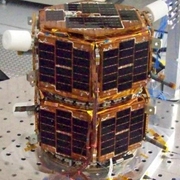 The FASTRAC satellites have been in operation for more than a year and the team has been able to get a lot of data from them, in great part due to the amazing support from the amateur radio community. Over the last month the team noticed that one of FASTRAC-1’s on board microcontrollers which controls one of the experiments has not been booting up correctly. The team has done everything possible to correct this issue apart from turning it off which can only happen if the batteries fall below an specific charge level. Since the satellites have been power positive throughout this whole year the only way this can happen is if the satellites transmit more often. Given that one of FASTRAC goals has always been to eventually provide a platform for amateur radio enthusiasts to use after the primary mission was over, the team has decided to open up FASTRAC-1 to the amateur radio community with the hope as more people use it to digipeat through the satellite, the battery levels will diminish and cause a hard reset of the microcontrollers on board. The satellite will be configured so that amateur radio operators can use it beginning on Friday Dec 2 at 10:00 AM CST. Starting on this date people will be able to digipeat through the satellites. The call sign and frequencies of the satellite are summarized below and an example of digipeating through the satellite is also shown in below. To increase the chances of causing a hard reset, it is requested that as many amateur radio enthusiasts try to digipeat through the satellite on the weekend of Dec 10. If you are successful at digipeating through the satellites or have any problems doing so please let us know at fastracsats@gmail.com, through our Facebook page (www.facebook.com/fastracsats) or through the forums on our website(http://fastrac.ae.utexas.edu/for_radio_operators/users/phpBB3/index.php).
The FASTRAC satellites have been in operation for more than a year and the team has been able to get a lot of data from them, in great part due to the amazing support from the amateur radio community. Over the last month the team noticed that one of FASTRAC-1’s on board microcontrollers which controls one of the experiments has not been booting up correctly. The team has done everything possible to correct this issue apart from turning it off which can only happen if the batteries fall below an specific charge level. Since the satellites have been power positive throughout this whole year the only way this can happen is if the satellites transmit more often. Given that one of FASTRAC goals has always been to eventually provide a platform for amateur radio enthusiasts to use after the primary mission was over, the team has decided to open up FASTRAC-1 to the amateur radio community with the hope as more people use it to digipeat through the satellite, the battery levels will diminish and cause a hard reset of the microcontrollers on board. The satellite will be configured so that amateur radio operators can use it beginning on Friday Dec 2 at 10:00 AM CST. Starting on this date people will be able to digipeat through the satellites. The call sign and frequencies of the satellite are summarized below and an example of digipeating through the satellite is also shown in below. To increase the chances of causing a hard reset, it is requested that as many amateur radio enthusiasts try to digipeat through the satellite on the weekend of Dec 10. If you are successful at digipeating through the satellites or have any problems doing so please let us know at fastracsats@gmail.com, through our Facebook page (www.facebook.com/fastracsats) or through the forums on our website(http://fastrac.ae.utexas.edu/for_radio_operators/users/phpBB3/index.php).
Frequency Information for FASTRAC-1
FASTRAC-1 “Sara Lily” Downlink Frequency: 437.345 MHz
FASTRAC-1 “Sara Lily” Uplink Frequency (1200 or 9600 baud): 145.825 MHz
FASTRAC-1 “Sara Lily” Satellite Call Sign: FAST1
Example of Digipeating through FAST1
cmd: c CALLSIGN via fast1
cmd: KE5DTW>CALLSIGN,FAST1/1: <>:
CALLSIGN>KE5DTW,FAST1*/1: :
CONNECTED to CALLSIGN VIA FAST1
Here the example shows KE5DTW (UT Austin Ground Station) digipeating through FAST1 to connect to CALLSIGN. CALLSIGN represents an arbitrary callsign and should be replaced with the callsign of the station with whom a connection is being attempted. The above example is based on a Kantronics KPC9612+ TNC.
For a PDF version of the announcement please go to the following link: http://fastrac.ae.utexas.edu/FASTRAC_Digipeating_Announcement.pdf
Thanks a lot,
THE FASTRAC TEAM
TLE Data Fastrac:
FAST1
1 90025U 0 11335.45306295 +.00001032 +00000-0 +15451-3 0 00393
2 90025 071.9715 030.4150 0018019 325.1311 034.8724 14.76812202006755
FAST2
1 90026U 0 11335.42573440 +.00001017 +00000-0 +15318-3 0 00428
2 90026 071.9748 030.7858 0018597 322.4343 037.5518 14.76570860006646
 Project ELaNa, NASA’s “Educational Launch of NanoSat” managed by the Launch Services Program at the Kennedy Space Center, announced on February 10 that the AMSAT Fox-1 cubesat has been selected to join the program. AMSAT will work with NASA in a collaborative agreement where NASA will cover the integration and launch costs of satellites deemed to have merit in support of their strategic and educational goals.
Project ELaNa, NASA’s “Educational Launch of NanoSat” managed by the Launch Services Program at the Kennedy Space Center, announced on February 10 that the AMSAT Fox-1 cubesat has been selected to join the program. AMSAT will work with NASA in a collaborative agreement where NASA will cover the integration and launch costs of satellites deemed to have merit in support of their strategic and educational goals.
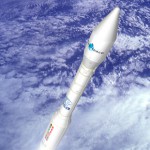 Vega is scheduled to launch on February 13, at 1000 UTC with eight student built amateur radio satellites.
Vega is scheduled to launch on February 13, at 1000 UTC with eight student built amateur radio satellites. 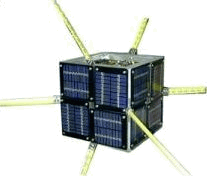 NAV OSCAR 44 – PCSat (Recovery)
NAV OSCAR 44 – PCSat (Recovery)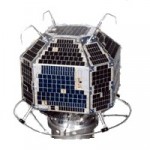 JJ1ZUU tweet indicates FO-29 may resume operations soon, probably scheduled. Details will follow and the schedule propably be announced.
JJ1ZUU tweet indicates FO-29 may resume operations soon, probably scheduled. Details will follow and the schedule propably be announced. The FASTRAC satellites have been in operation for more than a year and the team has been able to get a lot of data from them, in great part due to the amazing support from the amateur radio community. Over the last month the team noticed that one of FASTRAC-1’s on board microcontrollers which controls one of the experiments has not been booting up correctly. The team has done everything possible to correct this issue apart from turning it off which can only happen if the batteries fall below an specific charge level. Since the satellites have been power positive throughout this whole year the only way this can happen is if the satellites transmit more often. Given that one of FASTRAC goals has always been to eventually provide a platform for amateur radio enthusiasts to use after the primary mission was over, the team has decided to open up FASTRAC-1 to the amateur radio community with the hope as more people use it to digipeat through the satellite, the battery levels will diminish and cause a hard reset of the microcontrollers on board. The satellite will be configured so that amateur radio operators can use it beginning on Friday Dec 2 at 10:00 AM CST. Starting on this date people will be able to digipeat through the satellites. The call sign and frequencies of the satellite are summarized below and an example of digipeating through the satellite is also shown in below. To increase the chances of causing a hard reset, it is requested that as many amateur radio enthusiasts try to digipeat through the satellite on the weekend of Dec 10. If you are successful at digipeating through the satellites or have any problems doing so please let us know at fastracsats@gmail.com, through our Facebook page (www.facebook.com/fastracsats) or through the forums on our website(
The FASTRAC satellites have been in operation for more than a year and the team has been able to get a lot of data from them, in great part due to the amazing support from the amateur radio community. Over the last month the team noticed that one of FASTRAC-1’s on board microcontrollers which controls one of the experiments has not been booting up correctly. The team has done everything possible to correct this issue apart from turning it off which can only happen if the batteries fall below an specific charge level. Since the satellites have been power positive throughout this whole year the only way this can happen is if the satellites transmit more often. Given that one of FASTRAC goals has always been to eventually provide a platform for amateur radio enthusiasts to use after the primary mission was over, the team has decided to open up FASTRAC-1 to the amateur radio community with the hope as more people use it to digipeat through the satellite, the battery levels will diminish and cause a hard reset of the microcontrollers on board. The satellite will be configured so that amateur radio operators can use it beginning on Friday Dec 2 at 10:00 AM CST. Starting on this date people will be able to digipeat through the satellites. The call sign and frequencies of the satellite are summarized below and an example of digipeating through the satellite is also shown in below. To increase the chances of causing a hard reset, it is requested that as many amateur radio enthusiasts try to digipeat through the satellite on the weekend of Dec 10. If you are successful at digipeating through the satellites or have any problems doing so please let us know at fastracsats@gmail.com, through our Facebook page (www.facebook.com/fastracsats) or through the forums on our website(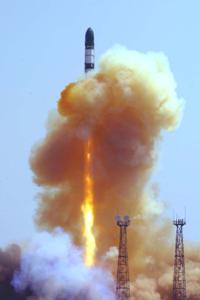 November 29, 2011 – AO-51 not responding to commands
November 29, 2011 – AO-51 not responding to commands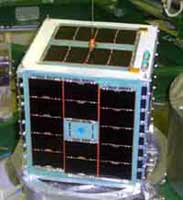 The command team will regularly attempt communications with the satellite over the coming months (and years). There is always the possibility that a cell will open and we could once again talk to our friend while illuminated. Thanks to all who helped fund, design, build, launch, command, and operate AO-51. It’s 7 year mission has been extraordinary. Please support AMSAT’s Fox-1 project, and other AMSAT projects worldwide with your time and money.
The command team will regularly attempt communications with the satellite over the coming months (and years). There is always the possibility that a cell will open and we could once again talk to our friend while illuminated. Thanks to all who helped fund, design, build, launch, command, and operate AO-51. It’s 7 year mission has been extraordinary. Please support AMSAT’s Fox-1 project, and other AMSAT projects worldwide with your time and money.